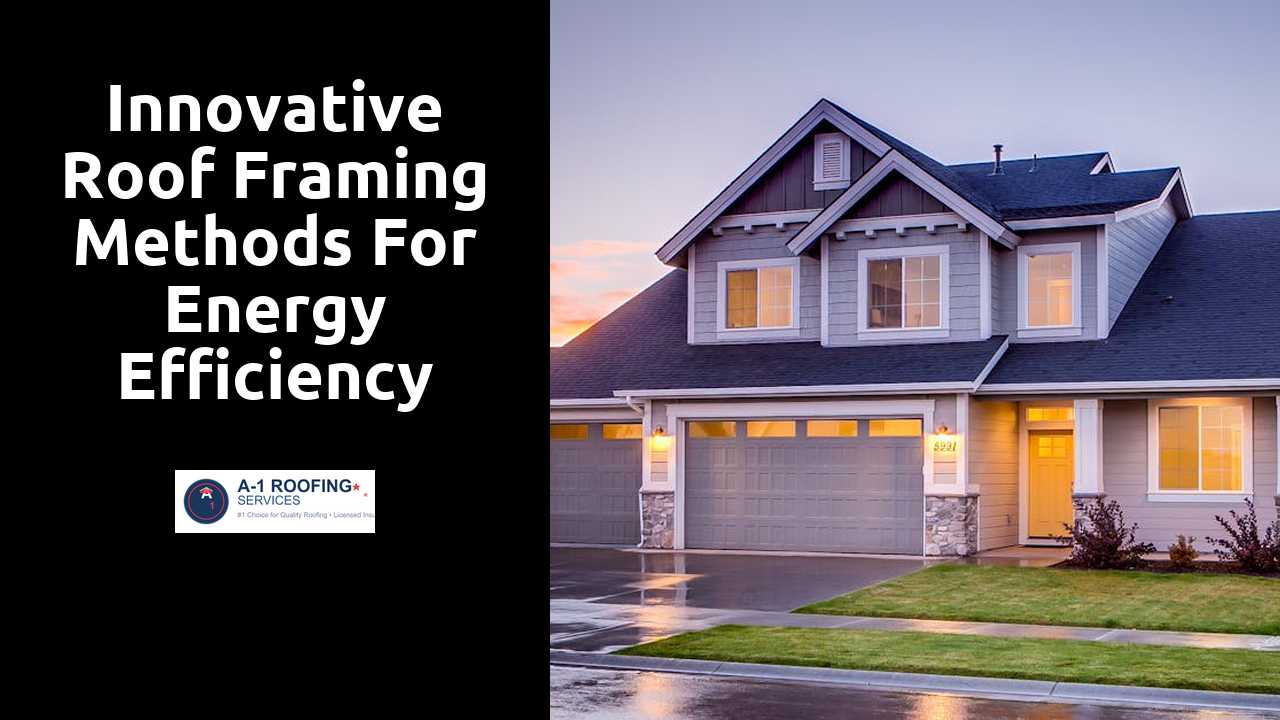
Innovative Roof Framing Methods for Energy Efficiency
Table Of Contents
Insulation Techniques in Roof Framing
Effective insulation is crucial in roof framing, as it plays a significant role in regulating a building's temperature. Rigid foam insulation and spray foam insulation are popular options, both providing high R-values and sealing gaps to prevent air leaks. These materials can be integrated into the framing system, strategically placed above or between rafters, to create a thermal barrier that minimizes energy loss. Additionally, using insulated roof panels can streamline installation while contributing to the overall energy efficiency of the structure.
Advanced techniques have emerged that incorporate insulation into the roofing materials themselves. For example, insulated concrete forms (ICFs) combine structural and insulating properties, enhancing the roof's thermal performance. Another innovative approach involves the use of reflective insulation, which can reduce heat gain during warmer months. Incorporating these methods allows builders to optimize energy efficiency while meeting architectural requirements.
See here for more great tips.
Maximizing Thermal Performance
Efficient thermal performance in roof framing begins with selecting the right insulation material. Materials such as spray foam, cellulose, and fiberglass vary in their R-values, which measure resistance to heat flow. The effectiveness of insulation also depends on the installation method to prevent air leaks. Properly sealing around joists and roof penetrations ensures that warm or cool air remains inside the building, reducing energy consumption.
Another important aspect is the roof’s ventilation system. Adequate ventilation works to minimize moisture accumulation, which can compromise insulation effectiveness. By allowing air to circulate, it helps maintain a balanced temperature within the roof space. This balance further enhances energy efficiency, as it prevents overheating in summer and heat loss in winter. Combining these techniques results in a more resilient structure that supports energy conservation long-term.
Green Roof Systems
A green roof system incorporates vegetation and soil layered on top of a building, providing numerous environmental benefits. These roofs not only help reduce energy costs but also improve air quality and promote biodiversity. By absorbing rainwater, they mitigate runoff, preventing water pollution and reducing the burden on stormwater systems. The vegetation also acts as an insulator, keeping buildings cooler in the summer and warmer during the winter.
The selection of plants is crucial for the success of a green roof system. Native and drought-resistant species are often chosen for their ability to thrive in the specific conditions of the roof environment. These plants require minimal maintenance while maximizing the roof’s energy efficiency. Additionally, the design can be tailored to complement the building's aesthetics, creating a harmonious blend of architecture and nature that enhances the urban landscape.
Integrating Vegetation for Energy Savings
Incorporating vegetation into roof systems not only enhances aesthetic appeal but also significantly contributes to energy savings. Living roofs, often referred to as green roofs, act as additional insulation, reducing the amount of heat absorbed by buildings during hot months. This cooling effect can lower air conditioning costs while simultaneously improving the building's overall energy efficiency. Furthermore, these green systems help mitigate urban heat islands by providing natural temperature regulation.
The selection of appropriate plant species plays a crucial role in maximizing the benefits of green roofs. Native and drought-resistant plants require less maintenance and irrigation, further enhancing energy savings. These roofs also help manage stormwater by absorbing rain, which reduces runoff and strain on urban drainage systems. Incorporating vegetation can create a sustainable ecosystem that helps filter pollutants and improve air quality, contributing to a healthier environment in densely populated areas.
The Role of Roof Pitch and Orientation
The angle at which a roof is pitched can significantly affect the energy efficiency of a building. Steeper roofs often allow for better airflow and can enhance ventilation, reducing the need for artificial cooling systems. Additionally, the pitch influences how much sunlight the roof can capture, which can be particularly beneficial for solar energy production. A well-considered roof pitch can maximize exposure to sun rays during peak hours, thus improving solar panel effectiveness and contributing to overall energy savings.
Orientation plays an equally crucial role in energy efficiency. Aligning roofs south-facing in the Northern Hemisphere allows for optimal solar gain throughout the year. This strategic positioning not only enhances the performance of solar panels but also helps in climate control by maximizing natural light and reducing dependency on heating systems during the winter months. Correct orientation helps to mitigate heat loss, keeping buildings more comfortable while minimizing energy consumption.
Optimizing Design for Energy Production
Designing a roof with energy production in mind involves careful consideration of pitch and orientation. A steeper pitch can allow for more effective solar panel placement, maximizing exposure to sunlight. Properly orienting the roof for optimal sun exposure throughout the day can substantially increase energy generation. Areas with high levels of sun exposure benefit significantly from such design strategies, ensuring that the energy systems installed are as efficient as possible.
In addition to pitch and orientation, incorporating advanced materials into the roofing framework can enhance energy capture. Reflective surfaces can help reduce heat absorption during warmer months, helping to balance the energy load year-round. Utilizing lightweight materials can contribute to overall energy efficiency by simplifying the structural demands of roofing systems. Advanced design techniques not only improve aesthetics but also play a critical role in the sustainability and energy output of the building.
Related Links
Comparing Traditional and Modern Roof Framing ApproachesThe Role of Engineering Principles in Effective Roof Framing